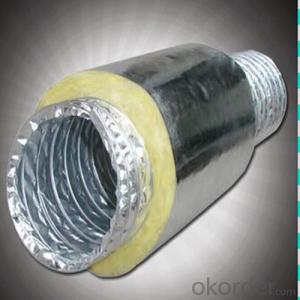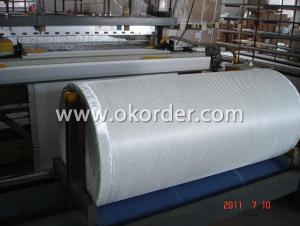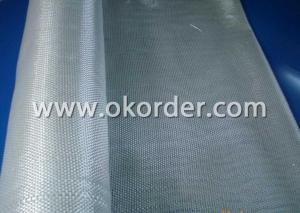Italian Supplier High Silica Fiberglass Fabrics Insulation Aluminum Foil
- Loading Port:
- China Main Port
- Payment Terms:
- TT OR LC
- Min Order Qty:
- -
- Supply Capability:
- -
OKorder Service Pledge
Quality Product, Order Online Tracking, Timely Delivery
OKorder Financial Service
Credit Rating, Credit Services, Credit Purchasing
You Might Also Like
Quick Details
| Type: | Place of Origin: | Brand Name: | |||
| Model Number: | name: |
Packaging & Delivery
| Packaging Detail: | inner roll, outer bag |
| Delivery Detail: | 15-20days |
Specifications
insulation aluminum foil high silica fiber glass cloth
1.Professional microfibre manufacture
2,OEM&ODM is welcome
- Q: Can fiberglass fabric be used for filters?
- Yes, fiberglass fabric can be used for filters. It is commonly used in applications such as air filters, oil filters, and water filtration systems due to its high efficiency in trapping particles and its resistance to chemicals and heat.
- Q: Is fiberglass fabric resistant to UV degradation?
- Generally, fiberglass fabric is resistant to UV degradation. It is composed of fine glass fibers woven together to create a fabric. These fibers possess inherent properties that make them highly resistant to the damaging effects of UV radiation. While many materials can degrade and discolor over time due to UV rays from the sun, fiberglass fabric is designed to endure prolonged exposure to sunlight without significant harm. The glass fibers in the fabric remain unaffected by UV rays, making fiberglass fabric a durable and long-lasting material for outdoor use. However, it is important to note that extended exposure to intense UV radiation may still cause some level of degradation. Therefore, it is advised to take appropriate care and maintenance measures, such as regular cleaning and occasional application of UV protectant coatings, to ensure the longevity of fiberglass fabric in outdoor settings.
- Q: How does fiberglass fabric perform in peel strength?
- Fiberglass fabric typically performs very well in terms of peel strength. Due to the inherent strength and durability of fiberglass, it can withstand significant pulling forces without delaminating or tearing. The adhesive bond between the fiberglass fabric and the substrate is usually quite strong, resulting in high peel strength values. This makes fiberglass fabric an excellent choice for applications where strong adhesion and resistance to peeling are required, such as in composite manufacturing, aerospace, automotive, and construction industries. Additionally, the flexibility and low weight of fiberglass fabric contribute to its overall performance in peel strength, allowing it to conform to various surfaces and maintain its integrity under stress.
- Q: How does fiberglass fabric perform in electrical conductivity?
- Fiberglass fabric possesses outstanding electrical insulation properties, rendering it an inadequate conductor of electricity. This is due to the presence of non-conductive, fine glass fibers in fiberglass, which restrict the passage of electrical current. Consequently, fiberglass fabric finds widespread use in electrical insulation applications, effectively mitigating the potential hazards of electric shocks or short circuits. Moreover, fiberglass fabric exhibits resistance to elevated temperatures, chemicals, and UV radiation, thus bolstering its effectiveness as an electrical insulator. All in all, fiberglass fabric emerges as a dependable material in terms of electrical conductivity, delivering exceptional insulation capabilities suitable for a diverse array of applications.
- Q: Can fiberglass fabric be used for hoses?
- Yes, fiberglass fabric can be used for hoses. It is a durable and heat-resistant material that can provide strength and reinforcement to hoses, making them suitable for various applications.
- Q: Asphalt + glass fiber cloth
- General underground pipeline corrosion protection, the past specifications are three oil two cloth
- Q: Can fiberglass fabric be used for making air ducts?
- Yes, fiberglass fabric can be used for making air ducts. Fiberglass fabric is a versatile material that is commonly used in various industries, including HVAC. It offers several advantages for air duct applications. Firstly, fiberglass fabric is lightweight, which makes it easier to handle and install in comparison to other materials such as sheet metal. This can lead to faster and more cost-effective installation processes. Secondly, fiberglass fabric is non-porous, which means it is resistant to moisture, mold, and mildew. This is particularly important in air ducts as it helps to maintain indoor air quality by preventing the growth of harmful bacteria and fungi. Additionally, fiberglass fabric has excellent thermal insulation properties. It can effectively retain heat or cold air, which helps to improve energy efficiency by reducing heat transfer and minimizing energy losses. Moreover, fiberglass fabric is also known for its fire-resistant properties, making it a safe choice for air duct applications. It has a high melting point and does not emit toxic gases when exposed to fire, which can be crucial in ensuring the safety of the occupants in case of a fire incident. Lastly, fiberglass fabric is flexible and can be easily molded and shaped to fit different duct configurations, including bends and turns. This flexibility allows for easy customization and adaptation to various building layouts. Overall, fiberglass fabric is a suitable material for making air ducts due to its lightweight, non-porous, thermal insulation, fire-resistant, and flexible properties. However, it is important to ensure that the fiberglass fabric used for air ducts meets the necessary industry standards and regulations to ensure proper performance and safety.
- Q: What is the resolution of glass fiber cloth and polyester fiber cloth?
- Fiberglass cloth is also commonly called fiberglass geotextile. A geosynthetic material widely used in civil engineering.
- Q: Can fiberglass fabric be used for medical devices?
- Yes, fiberglass fabric can be used for certain medical devices. Fiberglass fabric has several properties that make it suitable for medical applications. It is lightweight, flexible, and has a high strength-to-weight ratio, making it ideal for devices that require durability and support. Additionally, fiberglass fabric is non-toxic and non-allergenic, which is crucial for medical devices that come into contact with the human body. It can be used in various medical applications such as orthopedic braces, prosthetics, casts, and splints. However, it is important to note that fiberglass fabric should be properly sterilized and tested for biocompatibility before being used in medical devices to ensure it meets the necessary safety standards.
- Q: What about the leaking water made of fiberglass cloth?
- The water leakage in the water tank made of glass fiber cloth can be applied by asphalt. After the asphalt is solidified, water leakage can be prevented.
Send your message to us
Italian Supplier High Silica Fiberglass Fabrics Insulation Aluminum Foil
- Loading Port:
- China Main Port
- Payment Terms:
- TT OR LC
- Min Order Qty:
- -
- Supply Capability:
- -
OKorder Service Pledge
Quality Product, Order Online Tracking, Timely Delivery
OKorder Financial Service
Credit Rating, Credit Services, Credit Purchasing
Similar products
Hot products
Hot Searches
Related keywords























